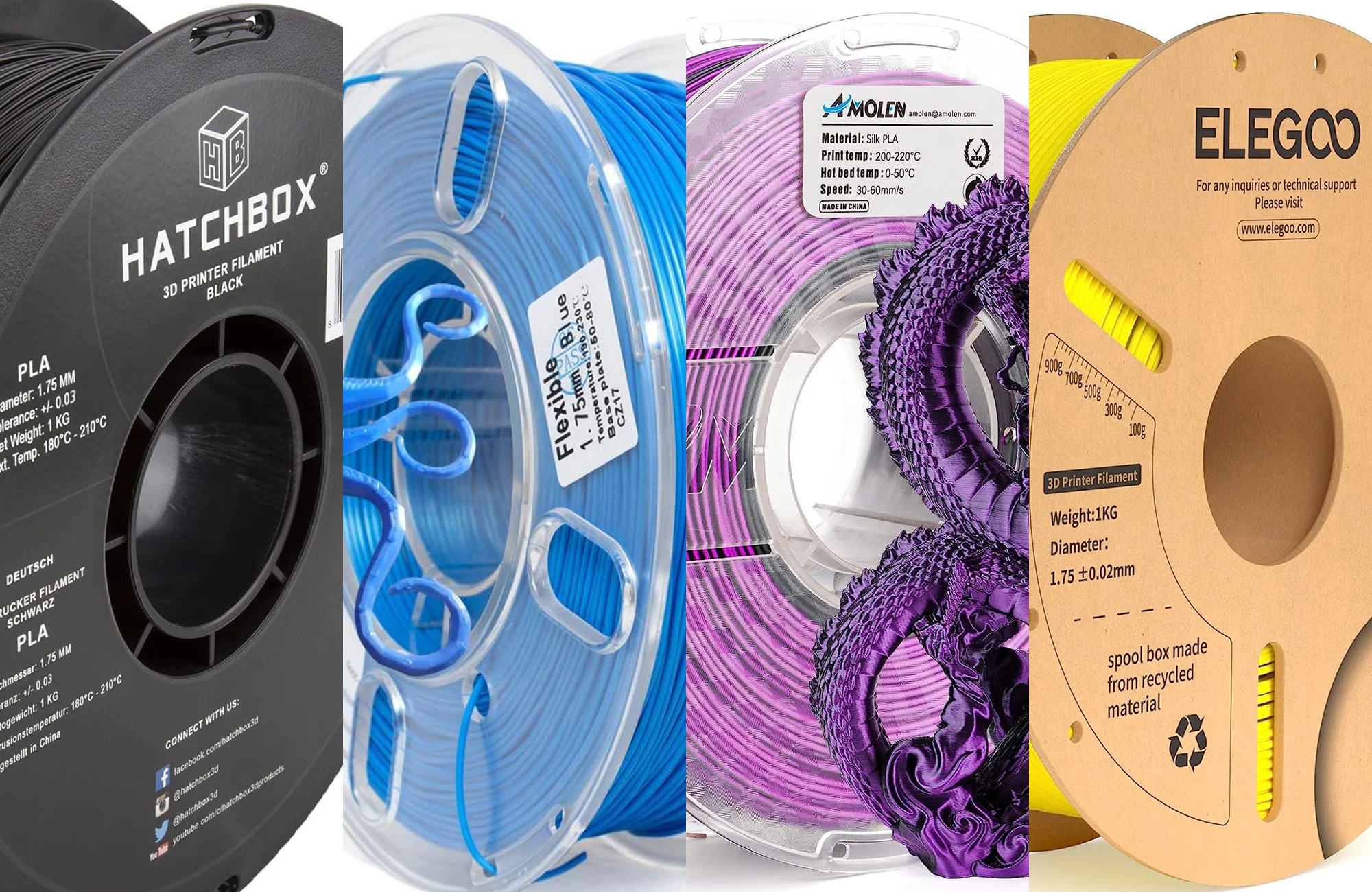3D Printing Materials: Which Filaments Are Right for Your Project?

When it comes to 3D printing, choosing the right filament is crucial for the success of your project. Each type of filament has its own unique properties, advantages, and disadvantages, making it suitable for different applications. In this blog post, we’ll explore some of the most popular 3D printing materials and help you decide which one is right for your project.
3D Printing Materials &Types
1. PLA (Polylactic Acid)
PLA is one of the most popular and widely used 3D printing filaments. It is made from renewable resources like corn starch or sugarcane, making it an eco-friendly option. PLA is easy to print with, has a low melting temperature, and produces minimal warping. It is ideal for beginners and is suitable for creating prototypes, decorative items, and models.
2. ABS (Acrylonitrile Butadiene Styrene)
ABS is a strong and durable filament known for its impact resistance and toughness. It is widely used in manufacturing and engineering applications. However, ABS requires a heated print bed and emits fumes during printing, so it is essential to have proper ventilation. It is suitable for creating functional parts, automotive components, and toys.
3. PETG (Polyethylene Terephthalate Glycol)
PETG is a versatile filament that combines the ease of printing of PLA with the strength and durability of ABS. It is resistant to moisture, chemicals, and UV light, making it ideal for outdoor applications. PETG is suitable for creating mechanical parts, containers, and any project that requires a durable and weather-resistant 3D Printing Materials.
4. TPU (Thermoplastic Polyurethane)
TPU is a flexible and elastic filament that is perfect for creating objects that need to bend or stretch. It has excellent abrasion resistance and can withstand wear and tear. TPU is suitable for creating phone cases, wearables, gaskets, and other flexible parts. Printing with TPU 3D Printing Materials can be challenging, so it is recommended for more experienced users.
5. Nylon
Nylon is a strong 3D Printing Materials and durable filament known for its high tensile strength and resistance to abrasion and impact. It is ideal for creating functional parts that need to withstand mechanical stress. Nylon has excellent layer adhesion and is suitable for creating gears, tools, and other mechanical components. However, it is hygroscopic, meaning it absorbs moisture from the air, so it needs to be stored properly.
6. Carbon Fiber Reinforced Filaments
Carbon fiber reinforced filaments are composite materials that combine a base polymer (such as PLA, ABS, or Nylon) with carbon fibers. These filaments offer increased strength, stiffness, and dimensional stability. They are ideal for high-performance applications, such as aerospace and automotive parts. However, they can be abrasive to the printer’s nozzle, so a hardened steel nozzle is recommended.

In conclusion, choosing the right 3D Printing Materials & filament for your 3D printing project depends on the specific requirements of your application. PLA is great for beginners and general-purpose printing, while ABS and PETG offer more durability for functional parts. TPU is perfect for flexible objects, and Nylon is ideal for high-strength applications. Carbon fiber reinforced filaments provide enhanced performance for demanding projects. By understanding the properties and uses of each filament, you can select the best material to achieve optimal results in your 3D printing endeavors.
